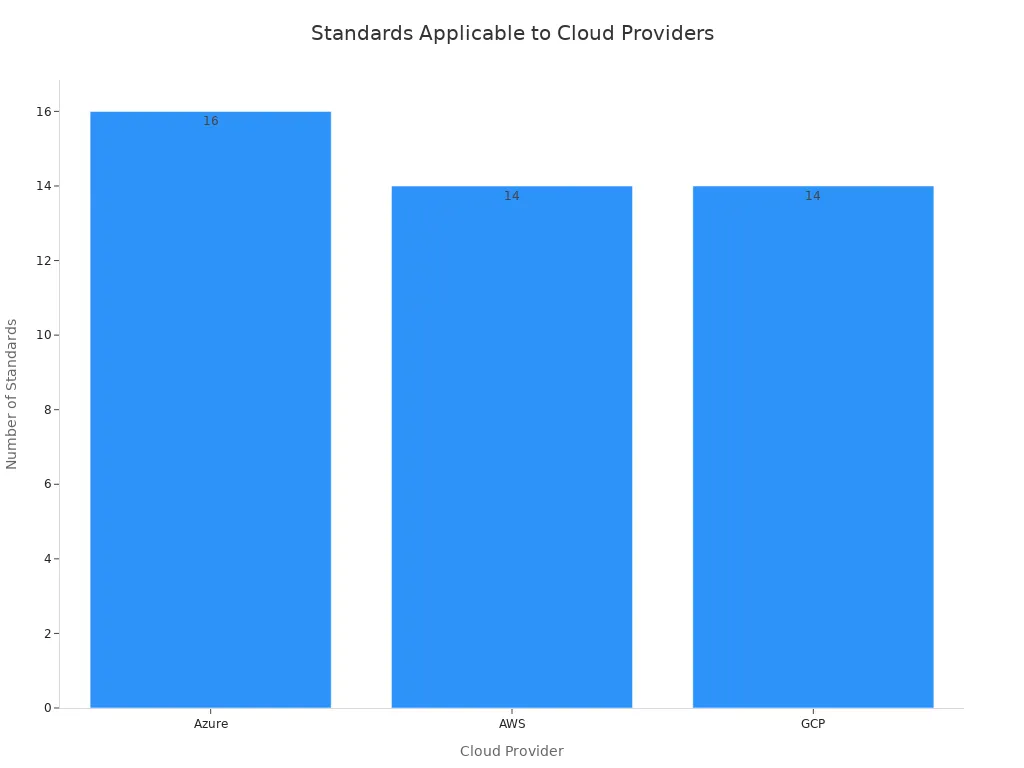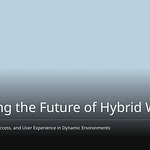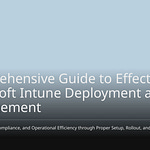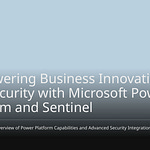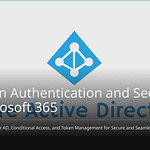Cloud systems are becoming increasingly complex. Robust Azure GRC Management plans are crucial in Azure. GRC extends beyond mere rule-following; it enhances your security posture, ensures operational efficiency, and strengthens your business resilience. Consider the significant penalties for non-compliance: Capital One faced an $80 million fine, and Equifax paid up to $700 million, both due to security vulnerabilities. Data breaches incur substantial costs for companies, averaging $4.24 million. This guide assists you in effectively managing Azure GRC, helping you build a secure cloud environment and ensuring adherence to all regulations.
Key Takeaways
Azure GRC means Governance, Risk, and Compliance. It helps you manage your cloud safely and follow rules.
Azure provides tools like Azure Policy and Blueprints. These tools help you set rules and deploy systems correctly.
You must find and fix risks in your Azure cloud. Tools like Azure Defender for Cloud help you do this.
Azure helps you meet many global rules. Azure Security Center checks your compliance and prepares you for audits.
Manage your cloud spending well. Azure tools help you track costs and save money.
Azure GRC Fundamentals
Defining Governance Risk and Compliance
You need to know about GRC. GRC means Governance, Risk, and Compliance. These three parts work together. They help you run your cloud well.
Governance makes the rules. It shows how your company works. Risk Management finds and handles dangers. Compliance ensures you obey all rules. This plan helps you manage your cloud safely.
Importance of GRC in Cloud
GRC is very important for your cloud. Only 40% of companies have good rules. But 85% use Azure for key tasks. This is a big problem. Good Azure GRC Management fixes this.
GRC helps IT work with business goals. It also manages risks. It follows industry rules. This makes cloud systems stronger. It also builds trust. GRC in the cloud sets standard ways to work. It makes security better. It ensures rules are followed. This means having strong rules. It means checking for risks often. It means making sure rules are kept.
Strong GRC makes your security better. It also makes things run smoother. It helps your cloud use match your business goals.
Key Regulatory and Industry Standards
Azure helps you meet many global rules. You must follow these rules.
Azure follows over 90 global rules. These include:
ISO/IEC 27001: This is for keeping information safe.
GDPR: This protects data for people in the EU.
HIPAA: This covers health information.
PCI DSS: This is for credit card data.
These rules help you follow laws. They help you avoid fines. They also build trust.
Azure Governance Components
You need good tools. These tools help you manage Azure. Azure has many main parts. These tools help you set rules. They help you put out resources the same way. They also control who can see what. They make sure your cloud work is safe and neat.
Azure Policy for Automated Governance
Azure Policy helps you make rules. These rules are for your Azure resources. It makes sure your resources follow your company’s rules. You can set rules. For example, you can stop making resources in some places. Azure Policy then checks if rules are followed. It uses a dashboard for this. This dashboard shows how your system is doing. You can also make your own rules. You use JSON for this. These rules help you fit your exact needs. For example, you can make sure tags are always the same. This tool is key for managing rules and checks. It helps you keep security rules and standards in your cloud.
Azure Blueprints for Standardized Deployments
Azure Blueprints lets you make templates. These templates are for your cloud systems. They help you put out resources the same way. They make things standard. This is true for different places or accounts. This means fewer mistakes in settings. Blueprints can have roles. They can have rules. They can also have Resource Manager templates. They make the setup process automatic. This saves time. It also makes sure you follow your rules. Blueprints also let you track changes. You can see changes and check setups easily.
Role Based Access Control RBAC
Azure Role-Based Access Control (RBAC) helps you manage access. It controls who can use your Azure resources. It lets you set exact permissions. RBAC has three main parts. These are role definitions, scope, and role assignments. Role definitions say what someone can do. This could be reading or writing data. Scope says where these rights work. This could be an account or a specific resource. Role assignments link a role definition to a user or group. This gives them access. You should give roles to groups. Do not give them to single users. This makes managing access easier and safer.
Management Groups for Resource Organization
Management groups help you sort your Azure accounts. You can put them in an order. This lets you use rules for many accounts at once. Rules set at a management group level go down. They go to all accounts and resources in that group. This makes managing easier. It also makes sure rules are the same. This is true for all your Azure things.
Risk Management in Azure
You must manage risks in Azure. This keeps your data safe. It also keeps your systems running well.
Azure Cloud Risk Identification
First, find risks in your Azure cloud. This keeps your systems safe. Guess how likely a risk is. See how it hurts your business. Then, decide which risks are most important. Azure tools can help. Azure Advisor, Microsoft Defender for Cloud, and Microsoft Purview find risks. They find rule risks, security risks, and money risks. They also find work risks, data risks, and resource risks. For AI, test language models often. Finding risks needs constant checks. Threats change all the time. You need planned checks. You need people to do these checks. This keeps your cloud safe from new dangers.
Threat Modeling for Azure Workloads
You need to know about threats to your Azure apps. Threat modeling helps you. First, pick what to look at. List your assets. Then, get info about each part. Use pictures to see data flow. Think like an attacker. Find possible threats. Group threats using methods like STRIDE. Microsoft’s SDL Threat Modeling Tool can help. Fix threats by writing them down. Set up security checks. Plan for when checks fail. Always think a breach might happen. Keep track of your threat modeling. Use tools to find threats automatically. Start threat modeling early. This saves money. It builds security from the start. Teach your workers. They help find and fix threats.
Risk Mitigation Controls
After finding risks, you must control them. Azure Defender for Cloud uses AI. It finds risks. It also fixes them automatically. For example, a bad storage account is a big risk. Azure Policy can secure it automatically. This stops data leaks. You also need to manage risks from other companies. This is called vendor risk management. You must check their security too.
Continuous Risk Monitoring
Risk management is not a one-time job. You need to check all the time. This is continuous monitoring and improvement. You look for new threats. You also check if your controls still work. This helps you stay safe. You must also think about vendor risk management. This is for any outside services you use.
Compliance Management in Azure
You must manage compliance in Azure. This makes sure your cloud follows all rules. Azure has many tools. They help you stay compliant.
Mapping Compliance to Azure Services
Azure helps you meet many global rules. It works with over 90 frameworks. These include ISO 27001, GDPR, HIPAA, and SOC 2. You can match your compliance needs to Azure services. This makes sure your settings follow rules. Azure helps you build compliant systems from the start.
Azure Security Center for Compliance
Azure Security Center is a strong tool. It helps with your security compliance. It watches and makes your compliance better. You can set security rules for your whole company. This meets your specific compliance needs. The dashboard shows your status. It checks against industry standards. It gives constant checks and helpful ideas. You also get a Secure Score. This shows how well you meet Azure Security Benchmark rules. You can get reports. These include PDFs and CSVs. This helps you show your compliance status easily.
Preparing for Compliance Audits
Azure helps you get ready for audits. Automation makes things ready 24/7. This cuts manual work by up to 70%. You can use Azure’s features. They help gather proof. This makes your comprehensive security audit easier. You will have all data ready. This simplifies the whole audit & assessment process.
Unified Compliance with Microsoft 365
You can get unified compliance. Just link Azure with Microsoft 365. This makes management consistent. It works across all your platforms. It helps you see your compliance status in one place. This linking makes your work easier. It also makes things less complex.
Financial Governance and Cost Management
You must manage cloud spending well. This keeps your Azure cheap. Financial governance helps you control costs. It stops surprise bills.
Cost Management Tools and Practices
Azure has tools. They help track cloud costs. You can tag assets. This labels your resources. Tags sort spending. You can sort by team or project. This shows cost details. Organizing assets is also key. Use management groups. Use subscriptions and resource groups. Make a clear order. This helps you see costs. It helps with rules. You also control who sees costs. Give roles like Cost Management Contributor. Or give Reader roles. This gives the right access. It avoids too much access. Azure Cost Management & Billing tools watch spending. Tools like Turbo360 and CloudHealth offer more. They give full cost views. They help make costs better.
Budgeting and Cost Optimization
Set clear budgets. This helps manage spending. You can create and manage budgets in Azure. Use cost alerts. Get notes when spending is near limits. This avoids surprises. You can also optimize costs based on recommendations. Azure suggests ways to save. For example, make small unused resources. Or turn off idle ones. Buying Reserved Instances or Savings Plans saves money. This is for steady work. Schedule non-production resources. Run them only when needed. This saves money at slow times.
Preventing Cost Sprawl
Cost sprawl is when cloud spending grows too much. Good rules stop this. You can block bad resources. This makes sure only approved services run. Resource standardization is also important. It makes sure everyone uses the right resources. This stops wasted money. Azure Cost Management & Billing tools help manage money. They use tagging and budgeting. They also use auto-optimization. This keeps cloud costs steady and good.
Core Security Controls for Azure GRC Management
You need strong security rules. These rules keep your Azure safe. They help you reach your GRC goals. You build a safe cloud with these rules.
Identity and Access Management
You must control who uses your Azure things. This is identity and access management. It is a key part of your safety. A good identity and access management plan has four main parts:
Administration: You make strong rules for users. You use Azure Active Directory (now Microsoft Entra ID). This manages users in one place. You make and remove users automatically. You use Role-Based Access Control (RBAC). This gives rights based on jobs.
Authentication: You check who people are. Everyone needs Multifactor Authentication (MFA). You can sign in without a password. You use Conditional Access Policies. These ask for MFA based on how you sign in.
Authorization: You control what users do after signing in. You use Azure RBAC roles for exact control. You use Privileged Identity Management (PIM). This gives temporary access for big tasks. You check rights often. Make sure they are still correct.
Auditing: You watch and record all user actions. You use Azure Monitor and Log Analytics. These check data. You use Azure Sentinel for security info. You look at Azure AD Audit Logs. This finds strange things.
Also, follow other safety tips. Use fewer powerful accounts. Give different roles. Do not give more power to users. Do not give permanent access. Use Just-in-Time (JIT) access. This means access only when needed. Use passwordless sign-in and MFA. Set up Conditional Access policies. These ask for MFA. They check where you sign in from. They check your device. They check for risky sign-ins. Remove accounts you do not use. You need one identity for users. This is for all your systems. This helps avoid mistakes. You must manage a user’s full life. This removes access when not needed. Do not put app secrets in code. Get them from a safe place. Make sure you can remove these secrets. Change them often. Keep development areas safe. Control who can write code. Use automation and peer review. Limit who can read code. Use version control. Check code for safety issues. Always record all actions. This tracks who did what. It finds weak sign-ins. It checks access for rules.
Network Security and Segmentation
You need good network safety. This keeps your cloud safe. You can divide your network. This stops problems from spreading.
First, use identity as your main safety wall. You check who uses things. You give access based on roles. You give the least access needed.
Second, add network controls. These stop problems from spreading. They block bad access. They hide your workload resources. You set up network edges. You use DMZs. You make small network parts. You make logical borders. This is a strong azure security architecture.
You must also define roles clearly. This stops confusion and risks. You should organize your resources. Use Azure tools. Use management groups and subscriptions. Use resource groups. These tools separate your workload resources.
Azure Virtual Networks (VNets) give you a private network. This is inside Microsoft Azure. Things in a VNet can talk privately. You can connect your own systems to VNets. You can connect different VNets. Network Security Groups (NSGs) filter traffic. They control what goes in and out. NSGs divide your network. They set rules for subnets or virtual machines. Application Security Groups (ASGs) group virtual machines. You can apply traffic rules to the group. Azure Firewall filters traffic. It works between your cloud, the internet, and your systems. It uses advanced controls. Traffic Analytics shows your network divisions. It checks network flow logs. This confirms your safety rules. It finds rule breaks. These tools are key for strong network safety.
Data Protection and Encryption
You must protect your data. Azure has many ways to protect data. These keep your data safe. Azure encrypts data at rest by default. This means your stored data is safe. You can use your own keys for very private data. Azure encrypts data moving between its data centers by default.
Azure has different ways to store data.
Locally redundant storage (LRS) keeps three copies of your data. These copies are in one place. This protects against hardware problems.
Zone-redundant storage (ZRS) copies data across different places. This gives you more protection.
Geo-redundant storage (GRS) is the default. It keeps six copies of your data. Three are in one region. Three are in another region far away. This gives you the best protection.
Azure uses Transport Layer Security (TLS) 1.2 or later. This secures data moving between your device and Azure. It also uses IPsec/IKE encryption for VPNs. MACsec encrypts all Azure traffic between data centers. This keeps data private and whole.
Azure Key Vault helps you manage encryption keys and secrets. It stores secrets like passwords and API keys. It stores cryptographic keys. It also stores SSL/TLS certificates. Key Vault secures these items. It uses strong checks and rights. It encrypts key vaults at rest. It uses industry standards. It can use Hardware Security Modules (HSMs). This is for extra protection. You can create, change, and set end dates for keys. This helps you manage their life. Key Vault also helps you manage SSL/TLS certificates. You can store them safely. You can import trusted certificates. You should set end policies for secrets. Change them often. Use RBAC to control access. This ensures only authorized users get to secrets. This is a key part of your safety rules and standards.
Application Security
You need to secure apps on Azure. This is a big part of your safety. You should clearly see your Azure resources. You need to manage their safety. Use identity as a safety wall. This protects your data and cloud controls. Use tools that show your safety score. Follow safe setup guides. These are from groups like NIST and CIS. Watch your Azure resources for setting changes. This stops attackers from using known weak spots.
You should use RBAC for control plane access. Give the least rights needed. Use Just-in-Time (JIT) access for virtual machines. This limits access to only when needed. Use Shared Access Signatures for storage. This limits access to storage. Always use Multi-Factor Authentication (MFA) for important users. Use a Zero-Trust approach. This means you do not trust anyone by default. You check everything. You should check access to resources all the time. This finds compromised users. It also finds bad insiders. These are important safety tips.
You should follow the Security Development Lifecycle (SDL). This helps you build safer software. It also helps you meet rules. Use Azure DDoS Protection. This defends against distributed denial-of-service attacks. Turn on DDoS Protection on your network edges.
Azure Web Application Firewall (WAF) and Azure Front Door make apps safer. WAF protects against common web attacks. These include SQL injection and cross-site scripting. It can work in ‘Detection’ mode. This mode watches and logs. It can also work in ‘Prevention’ mode. This mode blocks bad requests. WAF uses custom rules and Azure-managed rules. This gives you full protection. When a rule matches, WAF can allow, block, log, or redirect. It also protects against DDoS attacks. You should save WAF logs to Azure Monitor. Review them often. This helps you fine-tune WAF policies. It helps you reduce false alarms. It also helps you understand attack patterns. Send WAF logs to Microsoft Sentinel. This helps you check threats across your whole Azure.
Azure Front Door includes a WAF. This protects against web weaknesses and DDoS attacks. Front Door handles SSL/TLS decryption. This reduces the load on your backend servers. It also centralizes certificate management. You can create custom safety rules. You can also block requests from certain areas. This makes your apps safer.
Monitoring and Incident Response
You must watch your cloud. You also need a plan. This is for security problems. This keeps your Azure GRC strong.
Logging and Monitoring with Azure Monitor
Azure Monitor watches everything. It watches your resources. It gathers data from many places.
It collects app data. It collects workload data. This includes how well they work.
It gets data from your systems. This includes containers. It includes operating systems.
It also gets data from Azure itself. You can get this data in different ways. Use Application Insights for apps. Agents get data from virtual machines. Diagnostic settings send logs to one place. Azure Monitor helps you look at this data.
Metrics explorer checks how healthy resources are. You can make charts. You can look at numbers.
Log Analytics helps you search log data. You use Kusto Query Language (KQL).
Azure Monitor Alerts tell you about big problems. They can start actions. These actions fix problems.
SIEM with Azure Sentinel
Azure Sentinel is a SIEM tool. It finds threats. Sentinel works well with Azure tools. This includes Microsoft Defender for Cloud. It includes Office 365. It helps follow many rules. Microsoft uses AI to find threats in Sentinel. This finds threats faster. It finds them better. Sentinel also costs less. This is compared to older SIEM tools.
It has 79% fewer false alarms.
It makes breaches 35% less likely.
It can cost 44% less. This is compared to old SIEMs. Sentinel uses AI. It makes investigations faster. It fixes problems automatically. It uses playbooks. These playbooks use Azure Logic Apps. This makes response times shorter.
Incident Response Planning
You need a clear plan. This is for security problems. This plan guides your team. It helps you act fast. This is for when a breach happens. Your plan should have steps. These are for finding, stopping, removing, and fixing. It also needs a review. This is after the problem. Practice your plan often. This makes sure everyone knows their job.
Vulnerability Management and Patching
You must find weaknesses. You must fix them. Regular vulnerability assessments help. These checks look for flaws. You then apply fixes. This closes security holes. Constant vulnerability assessments are key. They keep your Azure safe.
Advanced Azure GRC Capabilities
You can make your Azure GRC Management better. Advanced tools help you work smarter. They give you more information. These tools keep your cloud safe. They follow rules with less work.
Automating GRC Workflows
Automation makes your GRC tasks simple. You can use Azure Logic Apps. They build automatic workflows. These apps link different services. They start actions when things happen. This helps you act fast. It helps with security alerts. It helps with compliance problems.
Some Azure services use Logic Apps for automation:
Microsoft Sentinel: This SIEM tool uses Logic Apps. They are called Playbooks. It sets up tasks. It fixes problems. It checks things out.
Microsoft Defender for Cloud: This tool keeps security strong. It stops threats. It uses Azure Logic Apps. They automate tasks. It starts actions. This is based on alerts. It is based on ideas. It is based on compliance checks.
Azure Automation Runbooks: These run scripts. They use PowerShell and Python. They help with automation. Azure Logic Apps can start these runbooks.
Third-Party GRC Tool Integration
Sometimes, you need special tools. Azure works with many other GRC tools. These tools have full GRC parts. They add to Azure’s own tools. For example, SecurEnds helps with Cloud Security & Compliance (CSPM). It helps with Azure Cloud Security Compliance. It helps with Azure Cloud Compliance. This is for Cloud Infrastructure & Entitlement Management (CIEM). You can also add tools. These include 6clicks, Hyperproof, and Datadog. These links give you a wider view. They show your compliance and risk.
Future of Azure GRC
The future of Azure GRC will have more automation. It will have more AI. You will see shift-left governance. This is in DevOps pipelines. This means you add security to code early. Predictive risk management will use machine learning. This helps find threats before they happen. Automatic fixes will be normal. Rules that change will be standard. Azure will keep changing its rules. It will meet new global laws.
Azure GRC Implementation Roadmap
You need a clear plan. This plan helps manage Governance, Risk, and Compliance in Azure. This guide has three main steps. You will check what you do now. You will set strong rules. You will watch everything all the time. This helps make your cloud safe. It also helps it follow rules.
Assess GRC Maturity
First, know where you are. Understand your current GRC maturity. This means seeing how well your company handles GRC now. You can use tools like CSA-CMM. This helps find what is missing.
The Microsoft 365 Maturity Model also helps. It shows different levels.
Level 100 - Initial: You may not spend much on GRC. You have no clear rules. You only fix problems when you must. No one owns GRC. You do not watch it. This level has big risks. Data and compliance are not managed.
Level 200 - Managed: You know about rules. But you might just check boxes. You do not truly follow them. You have written rules. But you do not always make sure people follow them. This shows you know GRC. But you have not fully used it.
You must find these gaps. This shows what to fix. For example, a finance company used a workshop. They found governance gaps. They used CSA-CMM. This cut their risk by 40% in six months.
Implement GRC Guardrails
After you know your level, set strong rules. These rules are like “guardrails.” They stop bad things. They keep your Azure safe. They make sure it follows rules.
You use Azure tools for these guardrails:
Azure Policy: This tool sets rules. It makes sure rules are followed. It controls how you make things. It limits what you use. It tracks costs. This saves money.
Azure Blueprints: These are like templates. They help set up safe systems fast. They mix roles, policies, and code. This makes sure you follow rules. For example, a Zero Trust blueprint sets up networks. It blocks all traffic by default. You then add rules. This blueprint uses Azure Policy. It meets NIST SP 800-53 rules.
Azure RBAC (Role-Based Access Control): This controls who can use things. It gives rights based on jobs. Only allowed users can get to your things.
Azure Advisor: This tool finds unused things. It gives tips to save money.
Azure Pipelines: This is for releasing code. It checks security. It checks compliance. It checks costs. This is before new code goes out.
Azure Resource Manager (ARM) templates, Azure Bicep, and Azure DevOps: These manage your setup as code. You can set up things the same way every time.
Azure Repos and GitHub: These track changes. They track changes to your code. They track changes to your setup.
Azure Deployment Environments: These help teams build app setups fast. They use templates. This makes things consistent. It ensures good practices. It ensures security. It saves money.
Azure Policy and Azure Blueprints work together. Azure Policy stops you from making bad things. It sets rules for tags. It sets rules for types. It sets rules for locations. It helps meet rules like HIPAA. It helps meet PCI-DSS and GDPR. Azure Blueprints hold standards. They hold standards for Azure services. They hold standards for security. They hold standards for design. This makes things consistent. Blueprints include Role Assignments. They include Policy Assignments. They include ARM templates. They help set up systems fast. They speed up work. Azure Blueprints let teams make reusable guides. These guides ensure you follow rules. They manage how things are set up. This combines roles. It combines controls. It combines setup as code.
Continuous GRC Monitoring
GRC is not a one-time job. You must watch your system all the time. This means looking for new risks. It means checking if rules still work. This keeps your Azure GRC Management strong.
You use tools to watch all the time:
Datadog Cloud Security Misconfigurations: This tracks your cloud’s compliance. It gathers proof for audits. It finds wrong settings. It shows security overviews. It shows compliance overviews. It finds when you break rules. It links these with other issues. It supports PCI DSS. It supports SOC 2. It supports GDPR. It supports HIPAA. It supports CIS benchmarks.
Kovrr’s Continuous Control Monitoring (CCM) engine: This tool uses live data. It updates your risk. It helps with GRC choices. It works with Azure Resource Graph. It works with Microsoft Defender for Cloud. This watching helps find problems fast. It lowers your risk. It helps put a money value on cyber risk. This helps you focus on big risks. It gathers proof automatically. This helps meet SEC rules. It helps meet DORA. It helps meet NIS 2 Directive. It helps meet ISO/IEC 27001. It helps meet CIS v8 controls.
Other tools also help. These include Drata. They include Secureframe. They include Sprinto. They include MetricStream ConnectedGRC. They include Netwrix. They include Thoropass. They include Scrut. They gather proof automatically. They give real-time alerts. They map rules. They manage audits.
Automatic alerts and dashboards are key.
Automatic alerts tell your team what to fix now. Risk owners see problems. They act fast. Leaders get quick info. They see how audit programs are doing. Automatic dashboards give answers fast. They save you from looking through papers. Leaders can see past trends. They find root causes. They make choices with live data. They do not use old numbers.
Automatic risk tools find new issues. They assign owners. This tracks updates. It records changes. GRC tools adapt fast to new rules. They keep compliance going. They do not need constant manual updates. They map controls to new rules. Dashboards give live updates. They show trends. They show issues. This makes things work better. These dashboards sort rules. They sort by HIPAA. They sort by GDPR. They sort by CCPA. They show your compliance status. They also alert you about deadlines. They show progress. They highlight tasks to do.
This guide taught you about GRC. It helps make Azure safe. It makes Azure strong. Good Azure GRC management never stops. You must always change and get better. Use these plans and tools. Make your cloud security stronger. Follow rules for a long time. Cloud security always changes. Being ready with GRC is key to win.
FAQ
What is Azure GRC?
Azure GRC means three things. It is Governance, Risk Management, and Compliance. You make rules for your cloud. You find and fix dangers. You follow all the rules. This keeps your Azure safe. It keeps it well-managed.
Why do you need GRC in your cloud?
GRC makes your cloud safer. It helps things run well. You avoid big money fines. It builds trust with people. GRC makes sure you meet rules. This makes your business stronger.
How does Azure help you stay compliant?
Azure follows over 90 global rules. These include ISO 27001 and GDPR. Azure Security Center checks your compliance. It gives you reports. This makes checks easier. You save time.
What tools help you manage costs in Azure?
Azure Cost Management & Billing tools track your money. You use tags and budgets. These tools help you save money. Azure Advisor finds unused things. It tells you how to save. This stops you from spending too much.



